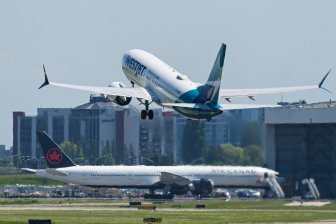For decades, the people living in Sarnia, Ont., and the nearby Aamjiwnaang First Nation have worried their proximity to refineries and chemical plants is making them sick.

The Aamjiwnaang First Nation is surrounded by industry. There are 62 large facilities within a 25-kilometre radius.
After a Global News investigation in 2017, the Ontario government launched a multi-million dollar project to examine the possible connection between air pollution from the industrial plants and public health.
This week, the results were made public. And they confirm what people feared.
The results show that in certain parts of Sarnia there is an increased risk of cancer, particularly leukemia, because of exposure to air pollution.

It was only six days after Dorothy and Wilson Plain Jr.’s son Jeremy was diagnosed with leukemia in 2006, that he was gone. The family lives in Aamjiwnaang First Nation, an area exposed to higher levels of some air pollution, including benzene, a cancer-causing chemical.
Years after their son’s death, the government-funded study now shows the level of benzene people are breathing can cause an “increase in the risk of blood cancers (leukemia)” with long-term exposure.
The risk, that review says, is greatest on the north side of the First Nation and into south Sarnia, close to the chemical plants.
And while the provincial government did not release a detailed final report, an earlier project update from November 2021 showed benzene levels in that same area were estimated at “up to 44 times” the air quality standard.
“We have a right to breathe clean air. We have a right to feel safe in our homes,” said Ada Lockridge, a resident of Aamjiwnaang and an environmental activist.
“If that was found anywhere else, it would be shut down until it’s fixed.”

The review also indicates acid gas flaring, which can cause spikes in sulphur dioxide levels, can pose health risks to people with breathing difficulty.
Industry leaders, meanwhile, say millions of dollars are being invested in facility upgrades and they’re complying with provincial regulations.
“That’s the focus to make sure that we’re playing by the rules that are set out for us in this area,” said Jason Vaillant general manager of the Bluewater Association for Safety, Environment, and Sustainability (BASES) in Sarnia-Lambton.
Others say this review shows it’s time those rules are updated.
“There is no excuse for these continued high levels,” said Scott Grant, an air pollution engineer and consultant for Aamjiwnaang First Nation.
“The air pollution control requirements really need to be upgraded for the facilities around Aamjiwnaang. And these air pollution control requirements are readily available.”
In a statement, Ontario’s Ministry of the Environment, Conservation and Parks spokesperson Gary Wheeler said: “The study sets the stage for further action by the ministry and partners to inform programs, reduce risk and improve community quality of life.
“We will continue to use all regulatory tools available and enforcement actions to hold polluters to account.”
But the people of Sarnia and Aamjiwnaang say after years of waiting, they simply can’t wait any longer.





Comments